In my role as architect teacher trainer at the Mongolian Construction Technology College, from 18.08.2007 to 28.08.2008, (VSO placement number 784033) the agreed project aims were to;
1. Support and develop the skills of teachers in the college
2. Teach architecture to architecture students
3. Cooperate on development of the architecture and construction professions in Mongolia
4. Encourage teachers and students to learn English as a tool for professional development
5. Assist in the developing the architecture profession
Key Dates
20 Aug Began Language training and In-Country training/orientation
24 Sep Began work at College
27 Sep Architecture Staff Meeting 10 staff attended
16 Nov Staff Continuing Professional Development training CPD 1; postponed
07 Dec Staff Continuing Professional Development training CPD 2; 13 staff attended
14 Jan Architecture Subject Curriculum Development, Prof. Dagshigdorj
18-20 Feb State Construction College assisting Asia-Pacific Accreditation annd Certification Council (APACC) accreditation submission
June- Curriculum analysis workshops
July- Participatory Teaching Methods Training for staff, several attended
January-August; Live Projects, with two teacher trainers, two architect teacher trainees and four students
Eco-Houses Selbe Khadad Sanzai and
Conference-Hotel-Childrens Camp Yarmag
August- Art Camp Arkhangai with several Mongolian professional artists
and recreational leave in Huvsgul, Khovd, and Ulgii
In order of the above aims, the main outcomes are described as follows;
1. Support and develop the skills of teachers in the college;(Коллэжийн Багш нарын ур чадвар, арга барилыг дээшлүүлэх сургалт, сэминаруудыг зохион явуулах) see Mongolian below.Working with staff at the college, Rob van Waardenburg VSO construction adviser and teacher trainer had prepared the college very effectively before my arrival. Working in coordination with Rob, my aim of supporting the teachers' development was continually pursued through the year, including during most of the summer recess, and some progress was achieved. I worked within and also beyond the MCTC; I collaborated with and assisted MUST, State Construction College ("4-zam"), Darkhan Orgoo, Darkhan Vocational Training Centre, and the Technical and Technology College (UB), and advised the Construction Ministry on Human Resource Development in construction.
The strongest participants in my work with MCTC were G. Ariunaa, D. Bolormaa, Tsengel-Oyun (Tsenguune), new teachers Gursed and Lkhagva, and co-director / counterpart Hashbayar. Prof. Dagshigdorj, a senior teacher and member of the architecture profession who initally showed interest in working together with me later had very limited time and interest, and teachers Densmaa and Enkhtungalag found limited time for developing their professional skills. Seminars and informal training sessions for staff were held in December, January, February, March, April and also July, with attendances between one and twenty people.
For example, training was held for teachers in using the Internet as a research tool for finding teaching materials e.g. in the English language. Some techniques discussed were taken up by Tormandakh, Enkhbold and Enkhzaya (Venturi VVH text analysis) Training was continued with English teachers, developing teaching materials for English teaching. English teachers Enkhzaya, Enkhbold und Boloorma successfully facilitated the staff training with my support on Fri 7 December. Enkhzaya developed her skills quickly and in February gained a better paid job at the state construction college.
In early June I arranged a joint training seminar on course structures between our college and the Technical and Technology College architecture teachers. This was useful in mapping the courses and analysing the subject teaching components streams and continuity, opening the possibility for architecture teachers to gain an overview of the curriculum and undertake curriculum development.
From January to August a 'live project' approach was adopted, to run three real ('live') architectural design projects with a multi-disciplinary group of staff in a team;
i. World Vision Bayankhoshuu,
ii. Eco Houses in Selbe Khadat, Sanzai (Sukhbaatar District) and
iii. Conference Hotel Childrens Resort in Yarmag (Bogd Uul)
These projects were a good way to support and develop skills of teachers and construction professionals, and to train train new architecture teachers ursed and Lkhagva. Although the first project was initially well organised, the consultant Myagmarsuren's work was not used effectively and the partner NGO unable to continue.
The latter two projects, for private developers, were pursued with a delicate balance between a traditional 'pattern book' approach to drafting service and a more participatory and investigative approach to professionally developing the work teams, by exploring up to date site analysis and design generation methodologies, which take into account environmental awareness, universal accessibility, and client options and feedback cycles. In these projects, Ariunaa, Bolormaa and Tsenguune helped train newly qualified architecture graduates Gursed and Lkagva as team leaders, with students Delger-Dalai, Tumen-Od, Uyanga and Tumen-Gerel. Hashbayar assisted the live project financially and logistically. All participants learned a great deal about process in architectural design, and improved energy efficiency / ecological sustainability, accessibility, effective site analysis and architectural programming were all broached.
2. Teach architecture to architecture students - especially Diploma students completing in 2008.(Архитэкторч мэргэжлээр суралцаж буй оюуутнуудад архитэкторын хичээл заах)The architecture three year bachelor course curriculum was analysed early in the placement and it was discovered that the structure, similar to all such courses in Mongolia, is primarily technical and lacking in cultural design and synthetic- design studio- live project approaches typical of international undergraduuate building design and 'Part 1' courses.
Within the limitations of the technically oriented curriculum, assessment means were discussed and it was agreed examination and attendance might be complemented with more assignments, workshops, excursions etc as assessable knowledge indicators. Participatory teaching methods were felt lacking in the college, and a series of workshops on these were held with Tsenguune and Bolormaa, who I recommend should help to train the 25 newly recruited teachers due to commence in September.
The architecture final year diploma students I supervised gained some benefit, although their attendance and committment levels were erratic and insufficient. Diploma students Nerentsetseg, Oranbileg & Khanburged all failed to attend agreed lesson appointments and I helped others, particularly Gursed and Lkhagva and their studio colleagues. The local 'canon' of teaching materials (eg Neufert Architects Data, Russian Edition 1965) was identified in November as requiring revision and updating, however experienced staff (Prof Dagshidorj, who advised on Bat Od. 2005 rev 2007) expressed reluctance to review the canonisation of this textbook. The use of the Mongolian accessibility norm MN 31.101.04 and Construction Ministry expertise (Mongolian Energy Efficient and Accessible Pattern School - with GTZ) were resisted or ignored by staff. Relevant new literature (Bat Od. 2005 rev 2007, Ching 2006, internet based resources etc. - some in Mongolian, some in English and German) were introduced, and dynamic young staff showed interest in developing material based on K. Do et al 2006, as well as local senior Mongolian students' work, and the College's own live projects. Two graduates, Lkhagva and Gursed began training as architect - teachers.
3. Cooperate on development of the architecture and construction professions in Mongolia -(Тус сургуулийн хамтран ажиллагч байгуулаг түүншүүдэд зөвлөгөө өгөх )After initially working with Professor Dagshigdorj, establishing a context from his senior architect perspective, I also met some other professionals (Amgalan Sukhbaatar, Munkhzhul Choiljiljav, Purev-Erdene Ershuu) and gained an appreciation of the outlook of newer practitioners of architecture in Mongolia. In November I met with a representative board member of the Mongolian Association/Union of Architects, Purev-Erdene Ershuu, lecturer and architect, at the Centre for Architecture and Design Research. This Centre had been in involved in a conference called
The Current Situation of Ger Area in Ulaanbaatar City in 2007 which suggests some research activity and international collaboration on Urban and architectural development in Mongolia. However the Mongolian Association/Union of Architects, or architectural association of Mongolia, would not cooperate with Prof Dagshigdorj's idea of holding a meeting, nor was it able to provide any information about the need to develop the association. Colleagues in the fields of Contemporary Art, International Development, Disability Rights, Health, and Non-Government Organisations Sectors concurred that there was difficulty contacting or working with any Mongolian Association/Union of Architects, or association of Mongolian architects. I offered to provide international introductions and to support developing means of extracurricular professional development for Mongolian architects Prof Dagshigdorj, E. Purev-Erdene, N. Tormandakh and others.
In the recent UIA (International Union of Architects) meeting apparently to be attended by Dagshigdorj and others from Mongolia, my invitation arrange a meeting with RIBA delegates at a reception there was declined. RIBA also recently became more closely involved in the UIA system of international validation of architectural education.
As I advised the Mongoian Construction Ministry in December, I would encourage the Mongolian Architects Association to build its profile for professional development for Mongolian professionals, and to internationalise to serve the advancement of the profession in Mongolia.
4. Encourage teachers and students to learn English as a tool for professional development -(С Д М багш оюуутнуудын англи хэлий мэдлэгийг дээшлүүлэхэд дэшжиж ажиллах)Teachers and colleagues with whom I worked regularly benefited, including many national volunteers attending the English Speakers' Club, informally established with English Teacher volunteer Ruth Powell at the University of Humanities and my building neighbours' children, whom I taught English lessons voluntarily over twenty weeks.
The college administrators, directors and many teachers exclusively using Mongolian did not find time or interest to make use of the encouragement in English language usage. One first year (female) student called Lkhagva attended an English Walk and Talk in November at Chinggis Khuree with volunteers from the University of Humanities, and encouraged others to come to some lessons at the college. She also presented the walk and explained her motivation to learn English to teaching staff and college vice-director Hashbayar. I would like to see this kind of activity encouraged in the college, as the previous online and book-based Staff English training has been ineffective. Although senior staff Prof. Dagshigdorj and his assistant architect Enkhtungalag, like the college directors, do not show interest in using spoken English, many staff such as G. Ariunaa, D. Bolormaa, Tsengel-Oyun have developed advanced skills in spoken English, and there is potential for new teachers Gursed and Lkhagva, and college co-director / counterpart Hashbayar.
Conclusion; Small, Significant ChangeFollowing some consulting with the Construction Ministry, World Vision and the Gender Centre for Sustainable Development in the 8th Khoroo, where counterparts did not benefit from participation, the live architectural projects (Sanzai and Yarmag) provided the most concrete exercise in the placement in terms of training architect teachers. This work will potentially have a long term impact with the existing teachers - Bolormaa, Tsenguune, Ariunaa, Hashbayar - and new teachers, Lhagva and Gursed (and in future maybe Delger-Dalai and Tumen Od?) The former learned about Accessible and Energy-Efficient construction, about Project Management principles like time planning, about Site Analysis and Architectural Project
Planning, and how to organise client meetings and briefings, and how to research and write architectural programme briefs for projects.
I strongly encourage the teachers Bolormaa, Tsenguune, Ariunaa, and Hashbayar to continue the training we commenced over the past year in
- teaching research,
- languages for internationalisation,
- CV clinics, and
- internet based tools (powerpoint, flickr, blogging, google earth,wikipedia)
for architectural education.
Bolormaa and Tsenguune assisted in training Suvdmaa (English teacher) and Bolortsetseg (Architect Teacher) from the Technical and Technology College (TTC) in comparatively mapping degree curricula respectively of MCTC and TTC. The latter college has recently applied to work with VSO. I would strongly encourage these people to continue to work together on professional development and in future extend their skill sharing to the Mongolian Association of Architects.
I understand that about twenty new teachers have been recruited to MCTC and these will need guidance and encouragement in their professional development from the above trained teachers. I hope that the staff will continue to work with Rob van Waardenburg VSO and that new consultants or volunteers will continue the professional development work for which the college and teachers should have ownership and be proud.
The college, with labour of students as practical trainees, has been building a new classroom block. The directors and architects agreed in January - among other design improvements - to make the basement and first (ground) level wheelchair/barrow accessible. This approach to widening access to construction and architectural education is literal as well as setting the tone for more participative and inclusive college management.
Mongolian version
translation by courtesy of Ch. Munkhzul
note - special Mongolian font characters are missing
Томилолтын эцсийн тайлан (гар бичмэл) ВСО-гийн 784033 тоотын дагуу, архитектор багш сургагч х_н намайг 2007.08.18-аас 2008.08.28ны хооронд Монгол Улсын Барилгын Технологийн Коллеж(МУБТК)- д томилж ажиллуулахдаа доорх зорилтуудыг хэрэгж__лэхээр харилцан тохиролцов: 1. Коллежийн багш нарынур чадварыг х_гж__лэхэд туслах2. Архитектурын оюутнуудад архитектурын хичээл заах3. Монгол Улсын барилга архитектурын мэргэжлийг х_гж__лэх зорилгоор хамтран ажиллах 4. Мэргэжлээ дээшл__лэхэд тус болж чадахуйц англи хэлний чадвар эзэмш__лэхэд дэм _з__лэх 5. Архитектурын мэргэжлийг х_гж__лэхэд туслахГол чухал _др__д8-р сарын 20 Хэлний болон орон нутагт хийх сургалтаа эхлэв 9-р сарын 24 Коллеж дээр ажлаа эхлэв 9-р сарын 27 Архитектурын тэнхимийн уулзалт 10 х_нтэйгээр 11-р сарын 16 Тэнхимийн CPD 1 хойшлогдов12-р сарын 7 Тэнхимийн CPD 2 хойшлогдов 1-р сарын 14 Архитектурын сэдэвт хичээлийг Дагшигдоржтой хамт 2-р сарын 18-20 State CC assisting APACC accreditation submission6-р сар Хичээл т_л_вл_лт_нд д_н шинжилгээ хийх семинар 7-р сар Сургалтын арга барил семинар1-8-р сар; Бодит Т_сл__д, Эко хаус Сэлбэ Хадад Санзай ба Бага хурал –Буудал –
Яармаг дахь Х__хдийн зуслан 8-р сар Архангай дахь урлагийн групп болон Х_всг_л, Ховд, _лгийг__р хийсэн аялал
Дээрх зорилтоос гарах _р д_нг доорх байдлаар тайлбарлавал:
1. Коллежийн багш нарын ур чадвар, арга барилыг дээшл__лэх сургалт, ВСО-гийн ажилтан барилгын багш, сургагч Роб Ван Ваарденбург намайг ирэхээс _мн_ коллежид маш олон з_йлийг амжилттай хэрэгж__лж амжсан байв. Робийн хамтаар, багш нарыг х_гж__лэхэд туслах зорилго б_хий _йлс маань б_тэн жилийн турш, тэр дундаа зуны турш идэвхтэй _ргэлжилж зарим нэгэн амжилтыг дагуулсан билээ. Миний бие МУБТК- той хамтран ажиллахын сацуу ШУТИС, Барилгын Коллеж, Дархан _рг__, Дарханы Мэргэжлийн Сургалтын Т_в, Техник Технологийн Коллеж,УБ болон Барилгын яаманд Барилгын салбар дахь Х_ний Н__цийн Х_гжилд з_вл_г__ _гч, тусалж байв.
МУБТК-д хийсэн ажилд маань хамгийн их оролцож байсан х_м__с бол Г. Ариунаа, Д.Болормаа, Цэнгэл-Оюун(Цэнг__нээ), шинэ багш нар болох Г_рсэд, Лхагва, дэд захирал / хамтрагч Хашбаяр, ахлах багш буюу Монголын Архитекторуудын Эвлэлийн гиш__н профессор Дагшигдорж эхэн _едээ надтай хамтран ажиллах х_сэлтэй байгаагаа хэлж байсан хэдий ч хожим нь цаг болоод сонирхлын хувьд багасч хувирсан юм. М_н багш Дэнсмаа болон Энхтунгалаг нарт __рсдийн мэргэжил ур чадвараа х_гж__лэх цаг тун бага олдсон. Ажиллагсдад зориулсан семинар, мэдээллийн сургалтууд Арванхоёр, Нэг, Хоёр, Гурав, Д_р_в болон Долдугаар саруудад нэгээс хорин д_рв_н х_ний оролцоотойгоор зохиогдов.
Жишээлбэл энэх__ сургалтыг, багш нар хичээлийн холбогдолтой Англи хэл дээрх материалуудыг интернэтээр хайж сургах зорилготой зохион явуулсан. Зарим нэг арга барилуудын талаар Т_рмандах, Энхболд, Энхзаяа нартай ярилцсан. Уг сургалт маань Англи хэлний сургалттай холбоотой материалуудыг сайжруулах зорилгоор Англи хэлний багш нарт зориулж зохиогдсон. Англи хэлний багш Энхзаяа, Энхболд ба Болормаа нар Арванхоёрдугаар сарын 7-ны Баасан гаригт зохиогдсон сургалтыг амжилттай явуулах н_хцлийг б_рд__лж _гс_н байгаа. Энхзаяа __рийнх__ мэдлэгийг маш хурдан дээшл__лсэн б_г__д Хоёрдугаар сар гэхэд Улсын барилгын коллежид сайн цалинтай ажил олж авсан билээ.
Зургадугаар сарын эхээр, курсын б_тцийн талаар манай коллеж болон Техник Технологийн Коллежийн архитектурын багш нарын хооронд хамтарсан сургалт зохион явуулсан. Хичээлийг тоймлох, заах арга барилын талд д_н шинжилгээ хийх, _ргэлжл__лэх, хичээлийн програмыг ер_нхийд нь ойлгож авах бололцоо _гч, хичээлийн х_т_лб_р__дээ боловсронгуй болгоход нь тусалж _гсн__р__ их ач холбогдолтой байв.
Нэгээс Наймдугаар саруудад “бодит т_с_л” хийх оролдлого маань хэрэгжиж гурван бодит ('амьд') архитектур дизайны т_слийг олон янзын х_м__сээс б_рдсэн багуудтай хамтарч хэрэгж__лсэн. __нд: i. Баян хошуун дахь Дэлхийн з_н,ii. (СБД__ргийн) Сэлбэ, Хадат, Санзай дахь Эко Хаусууд iii. Конференс зочид буудал, (Богд уул) Яармаг дахь х__хдийн зуслан Эдгээр т_сл__д нь багш нар болон барилгын мэргэжилтн__дийн ур чадварыг х_гж__лж, дэмжихэд их тус болсон б_г__д залуу багш нар болох Г_рсэд, Лхагва нарын хувьд сургалт болсон. Эхний т_с_л маань зохион байгуулалт сайтай байсан боловч з_вл_х Мягмарс_рэнгийн ажил идэвхг_й б_г__д т_нш ТББ _ргэлжл__лж чадааг_й юм. Хувь х_м__сээс зохиосон дараагийн хоёр т_с_л бол
Дараагийн хоёрыг хувь х_м__с зохион явуулахдаа з_вх_н зураг зурж _йлчилдэг уламжлалт аргыг багаар ажиллахдаа талбай дээрээс цаг тухай б_рд хийсэн д_гнэлтээ задлан шинжилж, байгаль орчинг анхаарч, захиалагчийн боломжийг харгалздаг, н__ц бололцоондоо тулгуурладаг, олон янзаар ашиглаж болдог технологуудыг ашиглах оролдлого хийдэг орчин _еийн арга хоорондын тэнцвэрийг олсон т_сл__д болсон.
__нд Ариунаа, Болормаа, Цэнг__нээ нар оролцож шинэ т_гсс_н архитекторуудад тусалж багийг ахалсан б_г__д оюутан Дэлгэрдалай, Т_мэн-од, Уянга, Т_мэнгэрэл нар оролцсон. Хашбаяр бодит т_с_л санх__гийн болоод материаллаг байдлаар тусалсан юм. Б_гд л архитектурын явц, эрчим х_чний хэмнэлттэй, экологийн хувьд тэнцвэр б_хий, олон талаар ашиглаж болдог, _р д_нтэй талбайн д_н шинжилгээ ямар чухал болох талаар ил__ сайн ойлгож архитектурын програмыг б_гд сайжруулах талаар суралцсан. 2. Архитектор мэргэжлээр суралцаж буй оюуутнууд, тэр дундаа 2008 онд дипломоо авах оюутнуудад архитектурын хичээл заахАрхитектурын бакалавр зэрэг олгох 3 жилийн сургалтын х_т_лб_рт д_н шинжилгээ хийхэд миний хугацааны эхэн _е зориулагдсан б_г__д эндээс би нэгэн з_йлийг ойлгож мэдсэн юм. __р__р хэлбэл, Монголд баримталж байгаа эдгээр ижил т_стэй курсууд б_гд адилхан голдуу техникийн сургалт б_г__д соёлын дизайн, синтетик дизайн, студи буюу амьд бодитой т_с_л хэрэгж__лэх оролдлого хийдэг бусад олон улсын жишиг б_хий их сургуулийн дээд боловсролын _ндсэн шатны сургалтаас энэ тал дээр нэлээд дутмаг болох нь харагдсан.
Техник талаа баримталдаг сургалтын програмын хязгаарлалтаас болоод д_гнэх утгыг ярилцаж, шалгалт, оролцоо зэргийг ил__ олон тест, семинар, экскурс зэрэг мэдлэг сорисон з_йлсээр баяжуулж авах нь з_йтэй болсон. Сургалтын арга барил коллеж дээр дутмаг байгаа тул хэд хэдэн семинарыг Цэнг__нээ, Болормаа нартай хамтран явуулж, цаашид тэднийг шинээр ажилд орсон 25 багшид 9-р сард хичээл эхлэхэд туслаарай хэмээн захисан.
Миний удирдаж байсан архитектурын т_гс_х курсын оюутнуудтай ажиллахад тустай з_йл олныг мэдэрсэн ч гэлээ тэдний оролцоо, амлалт нь х_ндхэн байсан юм. Дипломын ангийн оюутан Наранцэцэг, Уранбилэг, Ханб_ргэд нар хичээлд суугааг_й б_г__д бусад нь ялангуяа Г_рсэд, Лхагва болон группын гиш__дэд тусалсан. Сургалтын материалын хуулбар _.х Ньюферт Архитектурын _г_гд_л, Орост 1965 онд хэвлэгдсэн) -ыг Арваннэгд_гээр сард хийсэн ба эргэж шинэчлэх, сайжруулах хэрэгтэй байсан ч туршлагатай ажилтнуудын з_гээс __рчл_х х_сэлг_й болохоо илэрхийлсэн юм.
Монгол Улсын норм MN 31.101.04 ба Барилгын Сайдын экспертиз (Монголын Эрчим Х_ч Хэмнэлт Ашиглалтын Сургууль - GTZ). Холбогдох шинэ номууд (Бат од 2005, 2007, Чинг 2006, интернэтийн материал. – зарим нь Монгол хэл дээр зарим нь Англи, Герман хэл дээр)- ыг танилцуулсан б_г__д эрч х_чтэй залуу багш нарт К.До 2006 болон Монголын ахлах оюутнуудын хийсэн ажил, бодит т_сл__дээр материал бэлдэх нь сонирхолтой байсан. Хоёр т_гс_гч Лхагва, Г_рсэд нар архитектор-багш болох сургалтаа эхлэв. 3. Монгол Улсын барилга архитектурын мэргэжлийг х_гж__лэх зорилгоор хамтран ажиллах Анх эхлээд Профессор Дагшигдоржтой хамтран ажиллаж байх _едээ т__ний ахлах архитекторын _зэл санаанд _ндэслэсэн ойлголт б_хий байсан бол м_н саяхан мэргэжлээ эзэмшсэн х_м__стэй уулзаж(С_хбаатарын Амгалан, Чойжилжавын М_нхзул) архитектурын боловсролыг туршигч шинэ х_м__сийн талаар ил__ х_ндэтгэлтэй хандах бодол т_рс_н юм. Арваннэгд_гээр сард би Архитектур, Судалгааны Т_вийн лектор, архитектор, Монголын Архитекторуудын Ассоциацийн т_л__л_гч болох Эрш__гийн П_рэв Эрдэнэтэй уулзсан юм.4. Conclusion; Small, Significant Change
4. Мэргэжлээ дээшл__лэхэд тус болж чадахуйц англи хэлний чадвар эзэмш__лэхэд дэм _з__лэх
Х_м__нлэгийн Ухааны Их Сургуулийн Англи хэлний багш, сайн дурын ажилтан Рут Паулийн санаачлагаар Англи хэлээр яригчдын Клубыг албан ёсны бус байдлаар __сгэн байгуулсан б_г__д __нд маш олон багш нар м_н __рийн х_слээр олон х_м__с ирсний дотор манай байрны х_рш__д зэрэг х_м__с байсан ба би тэдэнд ойролцоогоор хориод хичээл орсон юм.
Коллежийн удирдлагууд, захирлууд болон бусад олон багш гэх мэт байнга Монгол хэлээ ашигладаг х_м__ст цаг буюу сонирхол бага байснаас тэд Англи хэлийг хэрэглэх талдаа тун идэвх муутай байв. Нэгд_гээр курсын нэг \эмэгтэй\оюутан Лхагва Арваннэгд_гээр сард Чингис Х_рээнд Х_м__нлэгийн Ухааны Их Сургуулийн сайн дурынхантай хийсэн Англи хэлний Алхаа ба Яриа сэдэвт арга хэмжээ зохиогдоход оролцож коллеж дээр болсон бусад хичээл__дэд бусдыгаа уриалан оролцуулсан юм. М_н тэрээр явцын дунд __рийнх__ Англи хэл хэрхэн сурч байгаа талаараа багш нар болон коллежийн дэд захирал Хашбаяр нарт тайлбарлаж _гс_н. Багш нарт зориулсан англи хэлний онлайн болон номоор заах _мн_х сургалтууд идэвхг_й байсан тул коллежид иймэрх__ _йл ажиллагааг дэмжиж идэвхтэй хэрэгж__лээсэй гэж би туйлаас х_сэж байна. Хэдийгээр ахлах профессор Дагшигдорж болон туслах Энхтунгалаг нар коллежийн захирлуудын адилаар ярианы Англи хэлээ сайжруулахыг хичээж байгаа нь харагдааг_й ч __р олон багш ажилтнууд тодруулбал Г.Ариунаа, Д.Болормаа, Цэнгэл-Оюун нар __рсдийн англи хэлийг дээд т_вшний хэмжээнд сайжруулж чадсан б_г__д Г_рсэд, Лхагва м_н коллежийн туслах захирал хамтрагч Хашбаяр нарт цаашдаа маш их бололцоо бий нь харагдсан юм.
Д_гнэлт: Маш бага боловч чухал __рчл_лт
Барилгын Сайд, Дэлхийн З_н ба 8-р хорооны Тогтвортой Х_гжлийн Жендерийн Т_в зэрэгтэй з_вл_лдс_н ажил маань аль аль талдаа ач холбогдол муутай байснаас д_гнээд дараачийн удаад архитектор багш нарыг сургах зорилготой хичээл__дийг ихэнхдээ бетоны сэдвээр архитектурын бодит т_с_л маягаар явуулсан. Энэх__ ажил нь хуучин ажиллаж байсан багш нар болох Болормаа, Цэнг__нээ, Ариунаа, Хашбаяр болон шинэ багш нар Лхагва, Г_рсэд(ирээд_йд магадг_й Дэлгэрдалай, Т_мэн-од нар ч оролцох байх) нарт маш удаан хугацаанд _р шимээ _г_х боломжтой. Хэрэгж__лж болох б_г__д Эрчим х_ч хэмнэсэн барилга, талбай дээрх цагийн менежментийн зарчим, Т_слийн менежментийн аргууд, Архитектурын т_с_л т_л_вл_лт, захиалагчтай хийх уулзалт, анхны танилцуулга зэргийг хэрхэн зохион байгуулах, т_слийг архитектурын талаас хэрхэн д_гнэж бичих зэрэг тухай энд заасан.
Би хувьдаа багш Болормаа, Цэнг__нээ, Ариунаа, Хашбаяр нарыг _нг_рс_н нэг жилийн хугацаанд доорх салбаруудад явуулсан сургалтаа _ргэлжл__лээсэй гэж х_сэх байна. __нд:
- Сургах арга барилын судалгаа
- Олон улстай харьцах зорилгоор хэлээ судлах
- CV клиник \намтараа хэрхэн бичих аргуудыг сурах\
- Архитектурын боловсролтой холбоотой мэдээллийг интернэтээр (powerpoint, flickr, blogging, google earth, Wikipedia зэрэг вэб сайтаас) хайх чадвар эзэмших.
Болормаа болон Цэнг__нээ нар Техник Технологийн Коллежийн багш Сувдмаа(Англи хэлний багш) болон Болорцэцэг(Архитектурын багш) нарт МУБТК ба ТТК-ын зэрэг олгох хичээлийн х_т_лб_рийг харьцуулан системчлэх талд тусалж байсан. С__лээр коллеж ВСО-той ажиллах х_сэлтээ _гс_н. Би эдгээр х_м__сийг мэргэжлийн т_вшинд онцгой анхаарч ажиллаасай гэж зоригжуулж буй б_г__д ирээд_йд __рсдийн ур чадвараа нэмэгд__лж, т__нийгээ Монголын Архитекторуудын Ассоциацтай хуваалцаасай гэж х_сэх байна.
Миний ойлгосноор бол МУБТК шинээр 20-иод багш ажил авч байгаа гэсэн тул тэдэнд дээр дурдсан багш нар маань мэргэжлээ сайжруулж х_л__ олоход нь тус болоход хэрэгтэй. Багш ажилтнууд цаашдаа ВСО-ийн Роб Ван Ваарденбург болон шинэ з_вл_х, сайн дурын ажилтнуудтай хамтран ажиллахаа идэвхтэй _ргэлжл__лж __рсдийн мэргэжилд улам сайжирснаар коллежийн эзэд байх б_рэн итгэл бий болж мэргэжлийн хувьд бардам алхаж чадна байх.
Коллежийн оюутнууд дадлага хийх зорилгоор талбай дээр __рсд__ ажиллан шинэ анги барьж байгаа гэсэн. Захирал болон архитекторууд дизайныг сайжруулах зорилгоор нэгд_гээр сард зоорийн болон нэгд_гээр давхрыг тэргэнцэр орж болохоор хийх шийдвэр гаргасан. Энэх__ оролдлого нь барилга болон архитектурын боловсролд хандах хандлагаа сайжруулж байгаа хэрэг т_дийг_й коллежийн менежментийг ил__ идэвхтэй, оролцоо _нд_ртэй болгоход _ч__хэн ч атугай хувь нэмэр болж байгаа явдал юм.
please comment!
Manaixan messej bijeree daa!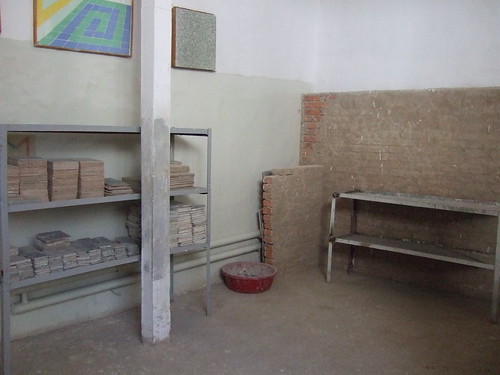





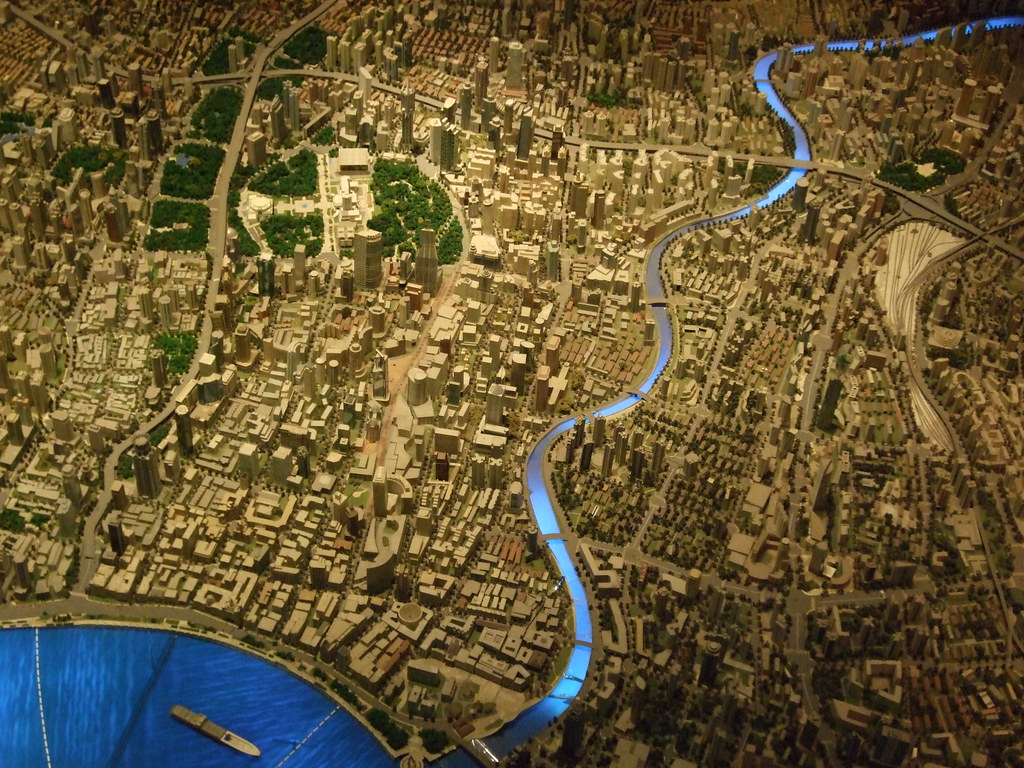 Upon arrival at Pudong Airport, I will have completed my journey from London to the 'Far East', via Ulaanbaatar, which started in July last year. Travelling by train halfway across the world has been a great personal and developmental journey.
Upon arrival at Pudong Airport, I will have completed my journey from London to the 'Far East', via Ulaanbaatar, which started in July last year. Travelling by train halfway across the world has been a great personal and developmental journey.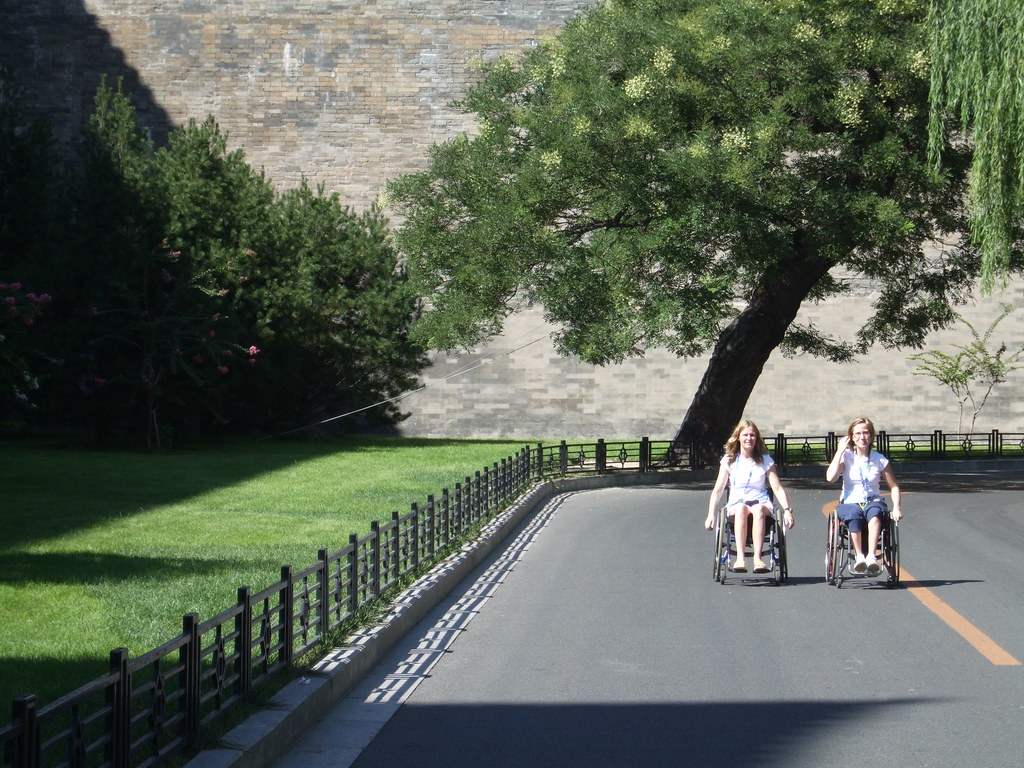 After passing paralympian tourists circling the Forbidden City (pic) on my bicycle in Beijing, I am in Shanghai, a city of 15-20 million whose sheer population density prompts amazing adaptations for mobility of the most diverse modes of transport of goods through the city. The subway system is incredibly complex and the bicycle seems to be for traffic experts, so I have been riding in taxis, trying to comprehend this city's 'urbanatomy'. I visited the Urban Planning museum (Youtube) with its enormous model of Shanghai. The form and the presentations are mostly spectacular, but I wonder about the real cultural processes of renewal, regeneration and 'development' here. I thought perhaps I might take to the river, for another perspective.
After passing paralympian tourists circling the Forbidden City (pic) on my bicycle in Beijing, I am in Shanghai, a city of 15-20 million whose sheer population density prompts amazing adaptations for mobility of the most diverse modes of transport of goods through the city. The subway system is incredibly complex and the bicycle seems to be for traffic experts, so I have been riding in taxis, trying to comprehend this city's 'urbanatomy'. I visited the Urban Planning museum (Youtube) with its enormous model of Shanghai. The form and the presentations are mostly spectacular, but I wonder about the real cultural processes of renewal, regeneration and 'development' here. I thought perhaps I might take to the river, for another perspective. I read some of Master Chu's 'homilies for families' while in UB, preparing for China. Recently, arriving in Beijing, I also read this, cited in Sidh Sintusingha's noteworthy editorial musings for Architects for Peace; "The most important thing in the Olympic Games is not to win but to take part, just as the most important thing in life is not the triumph but the struggle. The essential thing is not to have conquered but to have fought well." (Olympic creed, Pierre de Coubertin) At AfP I also read great news of Sonya Redman's (UNSW) Berkeley Essay Prize win for 'Shaping Identity and Place in Australian Indigenous Housing'.) I read about the list of schools participating in the World Architecture Festival, originally billed as the 'ten of the world's best'. I don't quite understand the criteria for this little league table when I see the list; Bartlett, University College of London (UK); Hafencuty Universitat (Germany) -sic; School of Design and Environment (Singapore); Ravensbourne College (UK); Kazan Architectural University (Russia); Escuela Técnica Superior de Arquitectura de la Universidad CEU San Pablo (Spain) (..six schools, not ten...)
I read some of Master Chu's 'homilies for families' while in UB, preparing for China. Recently, arriving in Beijing, I also read this, cited in Sidh Sintusingha's noteworthy editorial musings for Architects for Peace; "The most important thing in the Olympic Games is not to win but to take part, just as the most important thing in life is not the triumph but the struggle. The essential thing is not to have conquered but to have fought well." (Olympic creed, Pierre de Coubertin) At AfP I also read great news of Sonya Redman's (UNSW) Berkeley Essay Prize win for 'Shaping Identity and Place in Australian Indigenous Housing'.) I read about the list of schools participating in the World Architecture Festival, originally billed as the 'ten of the world's best'. I don't quite understand the criteria for this little league table when I see the list; Bartlett, University College of London (UK); Hafencuty Universitat (Germany) -sic; School of Design and Environment (Singapore); Ravensbourne College (UK); Kazan Architectural University (Russia); Escuela Técnica Superior de Arquitectura de la Universidad CEU San Pablo (Spain) (..six schools, not ten...)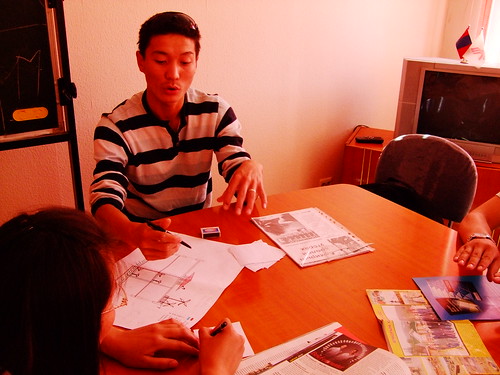 Architect Teacher Trainer; Small, Significant Change
Architect Teacher Trainer; Small, Significant Change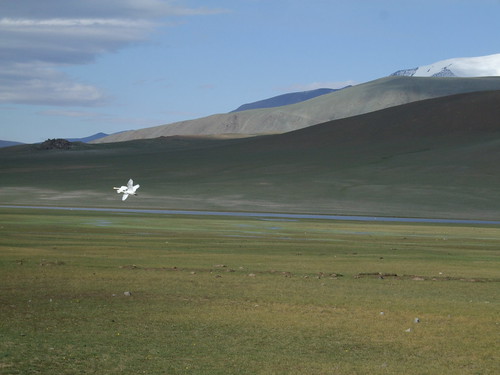 As a reward for enduring a year in Ulaanbaatar, we made a trip to see Tsambagarav in Mongolia's Altai mountains in the remote west. Flying in to Khovd over the mountains, I read Sunand Prasad's piece about the UIA (International Union of Architects) and remembered that my Mongolian colleagues (Dagshigdorj et al of the Mongolian Association of Architects) visiting UIA Turin had declined an invitation to attend a RIBA reception in my stead - at a beautiful 16th century Palazzo there. Thinking of their reluctance reminded me of my work, my final report in progress and exit interview on the 27th.
As a reward for enduring a year in Ulaanbaatar, we made a trip to see Tsambagarav in Mongolia's Altai mountains in the remote west. Flying in to Khovd over the mountains, I read Sunand Prasad's piece about the UIA (International Union of Architects) and remembered that my Mongolian colleagues (Dagshigdorj et al of the Mongolian Association of Architects) visiting UIA Turin had declined an invitation to attend a RIBA reception in my stead - at a beautiful 16th century Palazzo there. Thinking of their reluctance reminded me of my work, my final report in progress and exit interview on the 27th.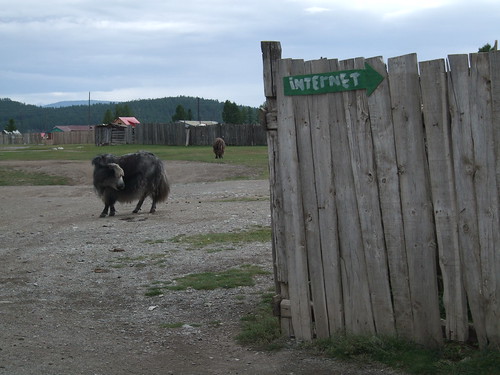 After arriving by train from London to Ulaanbaatar a year to the day before starting this blog entry, I was reflecting on slow travel, slow food, slow development and slow tourism in Mongolia. After the exhausting return from Arkhangai 'Art Camp' on a jolting 11 hour bus ride from Tsetserleg, it was a joy to take the night train to Erdenet, shortening the bus trip to Lake Hovsgol. Our cabin mate Gankhuyag turned out to be a (hearing) Mongolian Sign Language teacher. After wandering around Erdenet (10km from the station), we waited four hours for the bus to Mөrөn at the market and took the 15 hour journey. Somewhere by a roadside, as we took a 'comfort stop' in the green mountains by a river, a man on a bicycle held a fish aloft by his ger. I walked over and he showed me his catch of large trout and smaller fish, cleaned and silky to touch. Hours passed in the darkness until we (25 passengers and driver) stopped for 'Tsiuvan' (noodles) at a 'Guanz' eatery with one solar powered bulb. Everyone dozed on the bus rocking through the night, the fat brown farmer next to me leaning on me and nodding off to sleep.
After arriving by train from London to Ulaanbaatar a year to the day before starting this blog entry, I was reflecting on slow travel, slow food, slow development and slow tourism in Mongolia. After the exhausting return from Arkhangai 'Art Camp' on a jolting 11 hour bus ride from Tsetserleg, it was a joy to take the night train to Erdenet, shortening the bus trip to Lake Hovsgol. Our cabin mate Gankhuyag turned out to be a (hearing) Mongolian Sign Language teacher. After wandering around Erdenet (10km from the station), we waited four hours for the bus to Mөrөn at the market and took the 15 hour journey. Somewhere by a roadside, as we took a 'comfort stop' in the green mountains by a river, a man on a bicycle held a fish aloft by his ger. I walked over and he showed me his catch of large trout and smaller fish, cleaned and silky to touch. Hours passed in the darkness until we (25 passengers and driver) stopped for 'Tsiuvan' (noodles) at a 'Guanz' eatery with one solar powered bulb. Everyone dozed on the bus rocking through the night, the fat brown farmer next to me leaning on me and nodding off to sleep.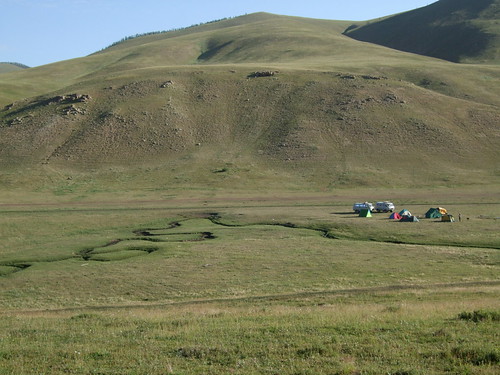 I arrived as requested at dawn at the 'Art Studio' in an apparently abandoned building in the industrial west of UB. No one stirred until 7am. Then, while waiting until after 9am for our departure, three of us made a foray to the abandoned Khotsh Bank nearby, and charmed the guard, as he awoke, and gave us a secret tour of this intriguing building, with gallery and sports hall.
I arrived as requested at dawn at the 'Art Studio' in an apparently abandoned building in the industrial west of UB. No one stirred until 7am. Then, while waiting until after 9am for our departure, three of us made a foray to the abandoned Khotsh Bank nearby, and charmed the guard, as he awoke, and gave us a secret tour of this intriguing building, with gallery and sports hall. This coming week I will join a group of Mongolian Artists from the Blue Sun group, and my two previously mentioned visiting collegues, on an 'Art Camp' in Arkhangai.
This coming week I will join a group of Mongolian Artists from the Blue Sun group, and my two previously mentioned visiting collegues, on an 'Art Camp' in Arkhangai. Today I spent a good hour talking to Chicago architecture student Sarah Bassett on US-Mongolia connections - architecture, urbanism and research - including ACMS, GTZ, Fulbright scholars and other researchers and projects I have seen here. Like Melitta Kuglitsch's work with savings groups in Bayanzurkh Ger District. I chuckle comparing my work here with 'Dreamspaces'... with the helicopter circling David Adjaye's glamorous trio on a rooftop...
Today I spent a good hour talking to Chicago architecture student Sarah Bassett on US-Mongolia connections - architecture, urbanism and research - including ACMS, GTZ, Fulbright scholars and other researchers and projects I have seen here. Like Melitta Kuglitsch's work with savings groups in Bayanzurkh Ger District. I chuckle comparing my work here with 'Dreamspaces'... with the helicopter circling David Adjaye's glamorous trio on a rooftop...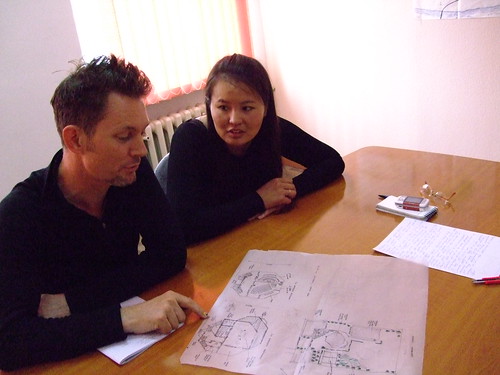 Yesterday, reasons given for slow progress of the teams included 1) One team leader has a new child, some others were not available, 2) Another college project - building a house, about which I had not previously heard - was running into lateness penalties and team members had to be re-deployed there, 3) our director was waiting for money from investors, in order to pay our team members, etc.
Yesterday, reasons given for slow progress of the teams included 1) One team leader has a new child, some others were not available, 2) Another college project - building a house, about which I had not previously heard - was running into lateness penalties and team members had to be re-deployed there, 3) our director was waiting for money from investors, in order to pay our team members, etc. 1. Site plan, site analysis (A2)
1. Site plan, site analysis (A2) 1. Site plan, site analysis (A2)
1. Site plan, site analysis (A2)
 Walking in the dusty heat through Khangai this morning, I noted the names on fences; streets or lots (Khangai 2, Khangai 4, Khangai 1). People were collecting water. As I passed the depot, a family came walking on the track towards me. As I nodded a greeting to a grandmother, she paused and extended towards me a polystyrene-plated parcel of dried fruit from which she had been eating. I selected a glace cherry and said "bayarlalaa" (thank you).
Walking in the dusty heat through Khangai this morning, I noted the names on fences; streets or lots (Khangai 2, Khangai 4, Khangai 1). People were collecting water. As I passed the depot, a family came walking on the track towards me. As I nodded a greeting to a grandmother, she paused and extended towards me a polystyrene-plated parcel of dried fruit from which she had been eating. I selected a glace cherry and said "bayarlalaa" (thank you). Architect teacher trainee Lkhagva, vice-director Hashaa, Bolormaa and I together visited client Baatar and three female family members, at Bilig Law Institute on Tuesday afternoon. Baatar, a London based Mongolian businessman, was not unfamiliar with accessible and energy efficient principles, but was less clear on the business model for the conference centre and youth recreation park. Mongolian and international markets for these touched upon. The thirteen year old Mongolian girl advised on youth recreation.
Architect teacher trainee Lkhagva, vice-director Hashaa, Bolormaa and I together visited client Baatar and three female family members, at Bilig Law Institute on Tuesday afternoon. Baatar, a London based Mongolian businessman, was not unfamiliar with accessible and energy efficient principles, but was less clear on the business model for the conference centre and youth recreation park. Mongolian and international markets for these touched upon. The thirteen year old Mongolian girl advised on youth recreation. After the team members attandance dwindled approaching the annual Naadam, I had a nice break, watching colleagues in the archery at a new stadium, getting a dose of sunburn in the bright white arena, and scoring tickets (thanks Uriana) for the opening ceremony at the National Stadium. Rising early on Saturday for the journey to the Horse Races in Хүй Долоон Худаг was worthwhile. A much needed Sunday rest was eschewed in favour of the Pinoy Picnic in a beautiful Хангайт Зуслан.
After the team members attandance dwindled approaching the annual Naadam, I had a nice break, watching colleagues in the archery at a new stadium, getting a dose of sunburn in the bright white arena, and scoring tickets (thanks Uriana) for the opening ceremony at the National Stadium. Rising early on Saturday for the journey to the Horse Races in Хүй Долоон Худаг was worthwhile. A much needed Sunday rest was eschewed in favour of the Pinoy Picnic in a beautiful Хангайт Зуслан.
 Yarmag team members (Tumen -Gerel, Uyanga and Ganbold from right-left above - team leader Lhagva has family leave) had made a good start with a plan for the Childrens Camp and conference centre (by Bogd Khaan Mountain) accompanied by some environmental data, but as yet lack a written brief. The accommodation requirements (200 conference goers, 200 restaurant seats , pool, sauna etc) had been established verbally, in conversation between the college Vice-Director Khashaa and the developer client.
Yarmag team members (Tumen -Gerel, Uyanga and Ganbold from right-left above - team leader Lhagva has family leave) had made a good start with a plan for the Childrens Camp and conference centre (by Bogd Khaan Mountain) accompanied by some environmental data, but as yet lack a written brief. The accommodation requirements (200 conference goers, 200 restaurant seats , pool, sauna etc) had been established verbally, in conversation between the college Vice-Director Khashaa and the developer client. Yesterday, I presented online material (translated into Mongolian with Bolormaa) about the design and technology of BedZED (Beddington Zero Energy Development) as a case study; solar orientation, passive thermal design and ventilation, green roofs, water harvesting and recycling, central heating and power plant, insulation values of materials, etc.
Yesterday, I presented online material (translated into Mongolian with Bolormaa) about the design and technology of BedZED (Beddington Zero Energy Development) as a case study; solar orientation, passive thermal design and ventilation, green roofs, water harvesting and recycling, central heating and power plant, insulation values of materials, etc. Sanzai /Selbe Khadad Eco Houses
Sanzai /Selbe Khadad Eco Houses reference examples;
reference examples;
 Upper: Selbe Khadad (Sukhbaatar district, North of UB)
Upper: Selbe Khadad (Sukhbaatar district, North of UB)